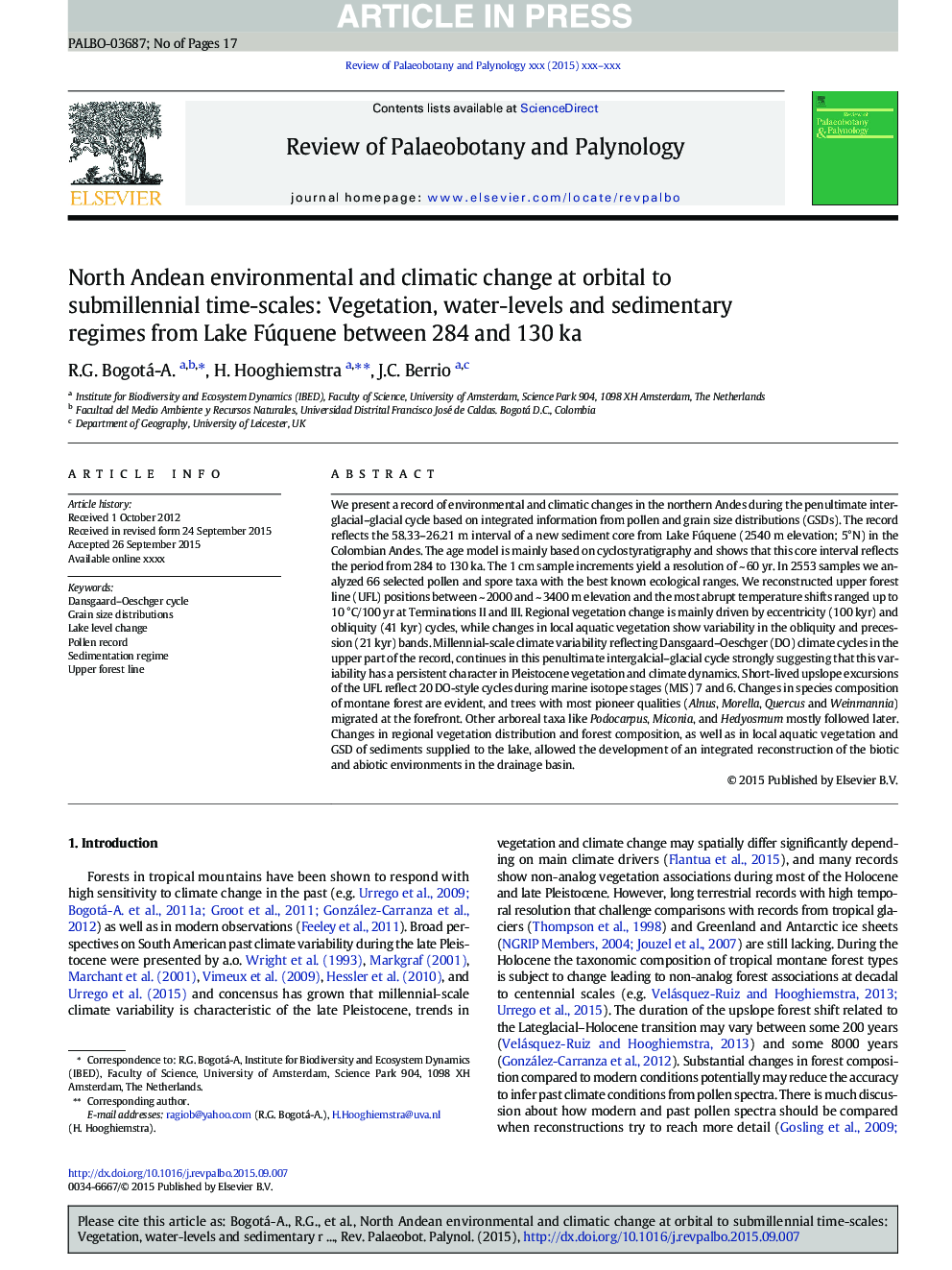| کد مقاله | کد نشریه | سال انتشار | مقاله انگلیسی | نسخه تمام متن |
|---|---|---|---|---|
| 6448630 | 1642471 | 2016 | 17 صفحه PDF | دانلود رایگان |
عنوان انگلیسی مقاله ISI
North Andean environmental and climatic change at orbital to submillennial time-scales: Vegetation, water-levels and sedimentary regimes from Lake Fúquene between 284 and 130Â ka
دانلود مقاله + سفارش ترجمه
دانلود مقاله ISI انگلیسی
رایگان برای ایرانیان
کلمات کلیدی
موضوعات مرتبط
مهندسی و علوم پایه
علوم زمین و سیارات
فسیل شناسی
پیش نمایش صفحه اول مقاله

چکیده انگلیسی
We present a record of environmental and climatic changes in the northern Andes during the penultimate interglacial-glacial cycle based on integrated information from pollen and grain size distributions (GSDs). The record reflects the 58.33-26.21 m interval of a new sediment core from Lake Fúquene (2540 m elevation; 5°N) in the Colombian Andes. The age model is mainly based on cyclostyratigraphy and shows that this core interval reflects the period from 284 to 130 ka. The 1 cm sample increments yield a resolution of ~ 60 yr. In 2553 samples we analyzed 66 selected pollen and spore taxa with the best known ecological ranges. We reconstructed upper forest line (UFL) positions between ~ 2000 and ~ 3400 m elevation and the most abrupt temperature shifts ranged up to 10 °C/100 yr at Terminations II and III. Regional vegetation change is mainly driven by eccentricity (100 kyr) and obliquity (41 kyr) cycles, while changes in local aquatic vegetation show variability in the obliquity and precession (21 kyr) bands. Millennial-scale climate variability reflecting Dansgaard-Oeschger (DO) climate cycles in the upper part of the record, continues in this penultimate intergalcial-glacial cycle strongly suggesting that this variability has a persistent character in Pleistocene vegetation and climate dynamics. Short-lived upslope excursions of the UFL reflect 20 DO-style cycles during marine isotope stages (MIS) 7 and 6. Changes in species composition of montane forest are evident, and trees with most pioneer qualities (Alnus, Morella, Quercus and Weinmannia) migrated at the forefront. Other arboreal taxa like Podocarpus, Miconia, and Hedyosmum mostly followed later. Changes in regional vegetation distribution and forest composition, as well as in local aquatic vegetation and GSD of sediments supplied to the lake, allowed the development of an integrated reconstruction of the biotic and abiotic environments in the drainage basin.
ناشر
Database: Elsevier - ScienceDirect (ساینس دایرکت)
Journal: Review of Palaeobotany and Palynology - Volume 226, March 2016, Pages 91-107
Journal: Review of Palaeobotany and Palynology - Volume 226, March 2016, Pages 91-107
نویسندگان
R.G. Bogotá-A., H. Hooghiemstra, J.C. Berrio,